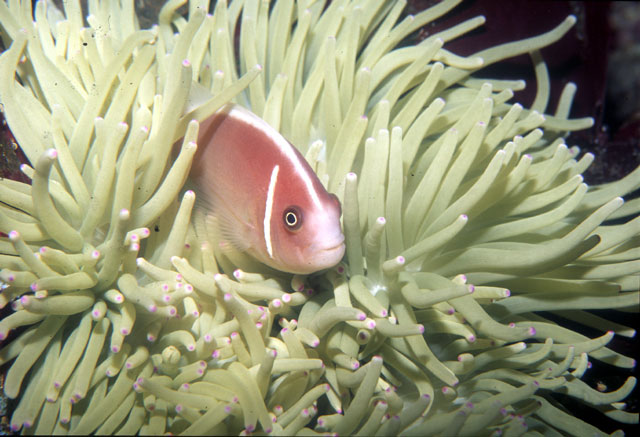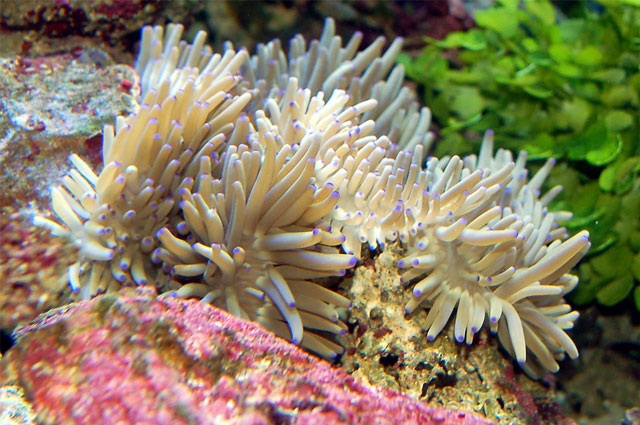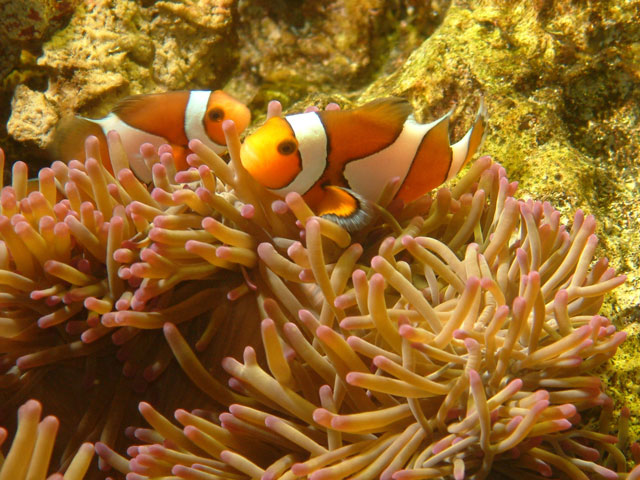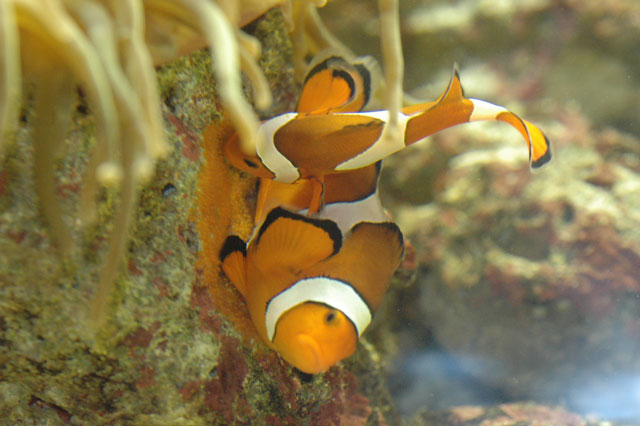Sea of Clownfish and Anemones
<<back | next>>
While the ocean is full of dangers, Clownfish live in sea anemones to protect themselves from enemies. When Clownfish lay eggs, they usually stay near by them, watching them until they hatch. Once hatched, larvae float off to the harsh ocean, grow up, and start living in symbiosis with sea anemones.

Clown anemonefish
Range: South of Amami Oshima Island, Western Pacific Ocean
A species of clownfish that became very popular after the featuring by the famous film. They have a distinctive orange-colored body with white stripes. Compared to other species of clownfish, clown anemonefish are mildly-mannered.

Pink anemonefish
Range: South of Amami Oshima Island, Western Pacific Ocean
The Pink anemonefish has a pink-colored body with distinctive white belts on the head and back. They are a little bit timid and tend to stay nearby sea anemones.

Leathery sea anemone
Range: South of Shikoku; Indian Ocean; Western Pacific Ocean
They are characterized by long tentacles. Their beautifully swaying tentacles come in various different colors.
Life of Clownfish
In this Tank, you can see how various species of anemonefish live in symbiosis with sea anemones. While they are popular for their cute appearance, they have a weird habit of living in poisonous sea anemones. In fact, they are immune to their poison and can protect themselves from predators by hiding in the poisonous sea anemone. Usually, anemonefish foam a group and live together in a single sea anemone. Anemonefish are sequential hermaphrodites, meaning that they develop into males first, and when they are mature and foam a group for reproduction, the largest anemonefish in the group becomes a female. The second largest one becomes a male, and reproduction is done only between two anemonefish. Other anemonefish in the group do not reproduce unless the largest or second largest anemonefish is removed from the group. This is their strategy to efficiently propagate by large anemonefish which can lay many eggs being a female. Couples of anemonefish are very devoted to each other. Clown anemonefish watch over and protect their eggs laid on the rock surface nearby their sea anemone. Males chase away predators which try to eat their eggs, while females send fresh sea water to the eggs and protect them from the tentacles of sea anemones. They stay near their eggs until they hatch and even live together with their larvae.

Clownfish living in n sea anemone

Crownfish protecting its eggs laid on the surface of the rock
<<back | next>>
